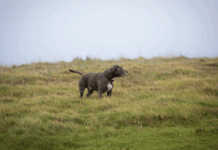Last Updated on July 16, 2023 by Dogs Vets
Choosing the Best Dog Food for Your Labrador: A Guide to a Healthy and Happy Canine Companion
Introduction:
The Labrador Retriever, often simply known as the Labrador, is one of the most beloved dog breeds worldwide. Renowned for their friendly nature, intelligence, and loyalty, Labradors make fantastic family pets and loyal companions.
However, to ensure that these remarkable dogs live long, happy, and healthy lives, providing them with proper nutrition is of utmost importance.
In this article, we will explore the characteristics of the Labrador breed and delve into the best food choices to maintain their optimal well-being.
Understanding the Labrador Breed
Labradors are medium to large-sized dogs with a sturdy build and a friendly disposition. Originating from Newfoundland, Canada, they were initially bred as working dogs, assisting fishermen by retrieving fishing nets and hauling catches.
Over time, their exceptional temperament and trainability made them sought-after as family pets and service dogs.
-
Physical Characteristics:
Labradors lie between 21.5 to 24.5 inches (55 to 60 cm) tall at the shoulder and weigh between 50 to 80 pounds (25 to 35 kg). They have a short, dense double coat that comes in three recognized colors: black, yellow, and chocolate. Their expressive eyes and wagging tail only add to their charm.
-
Temperament:
Labradors are well-known for their friendly and outgoing behavior towards humans. They are gentle, patient, and great with children, making them excellent family pets.
Additionally, their intelligence and eagerness to please make them easily trainable for various tasks and roles, including service and therapy work.
-
Energy and Exercise Needs:
Labradors are active dogs that thrive on regular exercise and mental stimulation. Daily walks, playtime, and engaging activities are essential to keep them mentally and physically stimulated, preventing them from becoming bored and developing destructive behaviors.
Importance of Proper Nutrition for Labradors
To ensure the overall well-being of Labradors, providing them with a balanced and nutritious diet is crucial.
A well-balanced diet contributes to maintaining a healthy body weight, supporting their active lifestyle, promoting a shiny coat, and enhancing their immune system.
Choosing the Right Dog Food
- High-Quality Protein:
Labradors are active dogs, and a diet rich in high-quality protein is essential for their muscle maintenance and growth. Look for dog food with meat (chicken, beef, fish) as the primary ingredient.
- Balanced Nutrients:
A Labrador’s diet should include a balance of carbohydrates, fats, vitamins, and minerals.
- Omega-3 Fatty Acids:
These essential fatty acids contribute to healthy skin and coat, reducing the likelihood of skin irritations and excessive shedding. Fish oil is an excellent source of Omega-3s.
- Joint Support:
Labradors are prone to joint issues like hip dysplasia. Foods that include glucosamine and chondroitin can help maintain joint health.
- Portion Control:
Labradors have a hearty appetite, which can lead to obesity if not carefully monitored. Consult with a veterinarian to determine the appropriate portion sizes based on age, activity level, and weight management needs.
Homemade vs. Commercial Dog Food
While some dog owners prefer preparing homemade meals for their Labradors, it is crucial to ensure that they meet all nutritional requirements.
Consult a veterinary nutritionist to create balanced recipes or choose high-quality commercial dog food that meets the specific needs of Labradors.
Common Foods to Avoid
Certain foods can be harmful or even toxic to Labradors and should be avoided. These include chocolate, caffeine, grapes, raisins, onions, garlic, and foods with high-fat content.
Feeding Schedule
Establish a consistent feeding schedule for your Labrador to regulate their eating habits and prevent obesity. Adult Labradors are usually fed twice a day, while puppies may require more frequent meals.
Conclusion
Labradors are undoubtedly one of the most treasured and beloved dog breeds, and their well-being is a top priority for any owner.
By understanding the Labrador breed’s characteristics and providing them with a nutritious and balanced diet, you can ensure that your furry friend lives a long, healthy, and joyful life as a cherished member of your family.
Remember to consult with your veterinarian to determine the best diet plan tailored to your Labrador’s individual needs. With proper care, love, and nourishment, your Labrador will thrive and bring happiness to your life for years to come.
Facts Check
We hope you enjoyed this article… What are your thoughts?
Please feel free to share this article!
e strive to provide the latest valuable information for pet lovers with accuracy and fairness. If you would like to add to this post or advertise with us, don’t hesitate reach us.
If you see something that doesn’t look right, contact us!

















